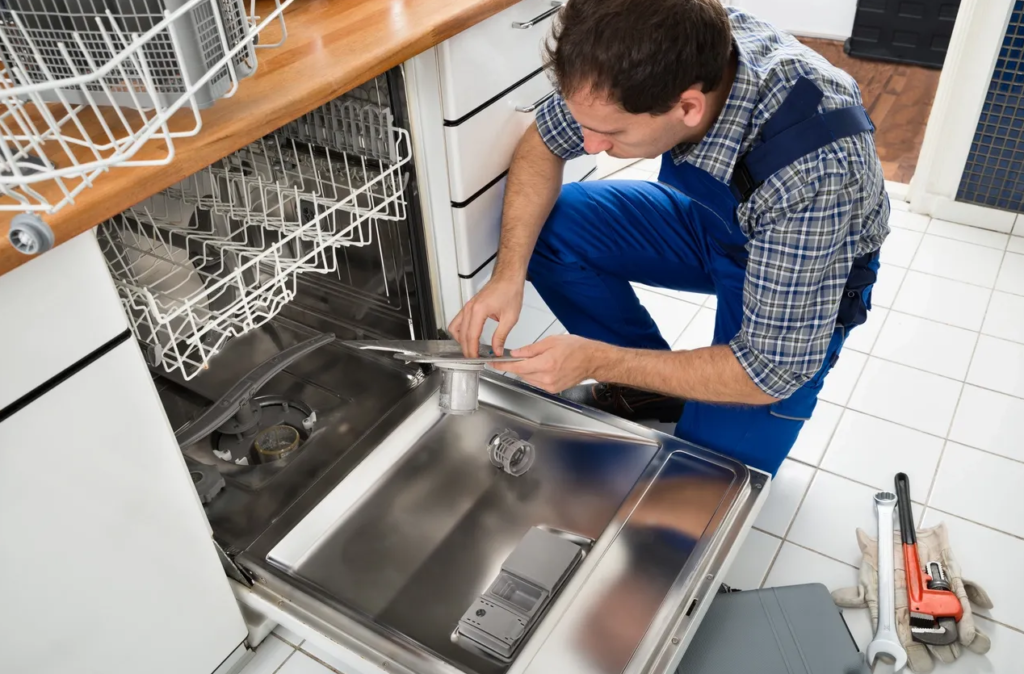The broil function of an oven can be your go-to feature when it comes to creating that perfect golden crust or quickly cooking food at high heat. However, when your oven suddenly stops producing heat on the broil setting, it can be both frustrating and concerning. Fortunately, understanding the potential causes of this issue can help you resolve it quickly, avoiding the inconvenience of sending your oven in for costly repairs. This guide will walk you through how to repair an oven with no heat on the broil setting, using simple diagnostic steps and solutions.
Whether you’re a seasoned DIY enthusiast or a curious beginner, these steps can help you save time, money, and frustration by restoring your oven’s broil function.
Understanding the Importance of the Broil Setting
The broil setting is different from standard baking. Rather than surrounding your food with heat, the broil setting delivers intense heat from the top of the oven. This setting is typically used to melt, brown, or crisp up dishes, providing a distinct cooking method that many recipes rely on.
When your oven fails to heat up on this setting, it compromises your cooking flexibility. That’s why fixing it becomes a priority for many home cooks. Fortunately, oven repair for this issue can often be straightforward if you know what to look for.
Potential Causes of No Heat in the Broil Setting
Before diving into the actual repair process, it’s important to understand why your oven’s broil setting might not be producing heat. Several components could be at fault, and identifying the right one will make the repair easier and faster.
1. Faulty Broil Element
One of the most common reasons for a non-functional broil setting is a malfunctioning broil element. The broil element is responsible for generating the heat from the top of the oven when this function is activated. If this element is broken, burned out, or damaged, the oven won’t produce heat as expected.
2. Defective Thermostat
The thermostat regulates the temperature inside the oven. If it’s defective, the oven might not be able to maintain or achieve the high temperatures required for broiling, even though the element is working.
3. Malfunctioning Control Board
The oven’s control board manages all the settings, including the broil function. If this electronic component fails, it may stop sending the correct signals to the broil element, preventing heat from being generated.
4. Wiring Issues
Loose or damaged wires within the oven can interrupt the electrical flow needed to heat the broil element. Over time, wires can wear down or disconnect due to normal usage or power surges.
5. Faulty Temperature Sensor
Modern ovens often use a temperature sensor to monitor and regulate heat levels. If this sensor malfunctions, it could prevent the oven from heating up properly on the broil setting.
Steps to Diagnose and Repair an Oven With No Heat on the Broil Setting
Safety First: Disconnect the Power
Before you start working on your oven, always make sure to disconnect it from the power source. This will prevent any electrical accidents or injuries while inspecting or repairing the appliance.
1. Check the Broil Element
The first and most common suspect is the broil element. Here’s how to check it:
- Locate the broil element in the upper part of the oven. In most ovens, it is visible and runs along the top interior.
- Visually inspect the element for any signs of damage, such as cracks, breaks, or visible burn marks.
- If the element appears damaged, it needs to be replaced. You can purchase a new broil element from your oven’s manufacturer or an appliance repair store.
How to Replace the Broil Element
- Remove the screws or clips holding the broil element in place.
- Gently pull the element forward to expose the electrical connectors.
- Disconnect the wires from the element (be sure to note how they are connected).
- Install the new broil element by reconnecting the wires and securing it back into place with the screws or clips.
After replacing the element, turn the oven back on and test the broil function. If it heats up, the problem is solved.
2. Test the Oven’s Thermostat
If the broil element appears to be intact, the next component to test is the thermostat. Here’s what to do:
- Using a multimeter, you can test whether the thermostat is working properly. Set the multimeter to the lowest ohms setting and touch the probes to the thermostat terminals.
- If the multimeter does not show continuity, the thermostat is likely defective and will need to be replaced.
Thermostat replacement may require you to remove the back panel of the oven, so ensure you’re comfortable with this step or consult a professional if needed.
3. Inspect the Control Board
A faulty control board can also prevent your oven from broiling. If neither the broil element nor the thermostat is at fault, check the control board. Look for any signs of damage like burned spots, faulty wiring, or worn-out connections.
Replacing the control board can be more complex, and often it’s a good idea to consult a technician if you’re unfamiliar with working on electronic components.
4. Check for Loose or Damaged Wires
Loose or damaged wiring could be the root cause of your broil function not working. Carefully inspect the wires leading to the broil element and thermostat. Make sure the connections are secure and that no wires are frayed or damaged.
If you find damaged wires, replacing them or re-securing the connections can restore the broil functionality.
5. Test the Temperature Sensor
Modern ovens often have a temperature sensor instead of a traditional thermostat. If this sensor is faulty, it might prevent the broil setting from reaching the required temperature. Use a multimeter to test the sensor for continuity and replace it if necessary.
When to Call a Professional for Oven Repair
While many issues can be diagnosed and repaired at home, some oven repairs require professional expertise. If you’ve gone through the steps above and still can’t get your broil setting to work, it’s time to call in an expert. Here are a few scenarios where professional help is recommended:
- The oven’s control board or electronics are beyond your expertise.
- You’re uncomfortable working with electrical components or wiring.
- You’ve tried replacing parts, but the broil setting still doesn’t work.
Remember, safety should always come first when working on any appliance. If in doubt, reaching out to an oven repair professional can save you from potential hazards and further damage to your appliance.
Preventing Future Broil Setting Problems
Regular maintenance can go a long way in keeping your oven in top shape. Here are some tips to help you avoid broil-setting issues in the future:
- Clean the oven regularly: Grease and food residue can sometimes affect the broil element, causing it to malfunction.
- Check the wiring: Periodically inspect the wiring in your oven for wear and tear. This can prevent electrical problems that might disrupt the broil setting.
- Use the broil function correctly: Make sure you are using the broil function as intended by following your oven’s manual. Avoid using the broil function at excessively high temperatures for long periods, as this can wear out the broil element prematurely.
In conclusion, learning how to repair an oven with no heat on the broil setting can save you from costly professional repairs and help you keep your kitchen functioning smoothly. Whether it’s a simple element replacement or a more complex wiring issue, addressing these problems early on will ensure your oven stays in top condition. If in doubt, don’t hesitate to contact an expert to get your broil function back up and running efficiently.














































